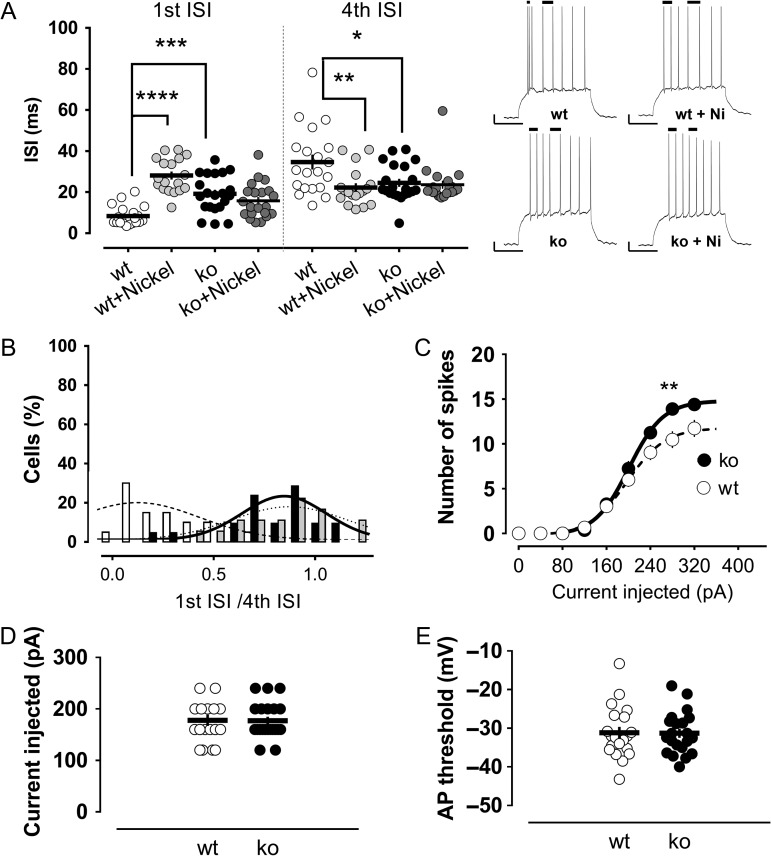Figure 4.
Burst firing of mature granule cells is conserved in mice and is mediated by the Cav3.2 T-type channel subtype. (A) Murine mature cells fire high-frequency bursts of action potentials that are strongly impaired in the presence of the T-type channel blocker nickel or in animals lacking the Cav3.2 channel subtype (Cav3.2 knockout). The first ISI, corresponding to the burst spikes in control conditions, is significantly increased in the nickel and the Cav3.2 knockout groups compared with the control animals. There was also a significant decrease in the fourth ISI in these groups. Nickel did not significantly modify the first or fourth ISI in the Cav3.2 knockout mice. Insets show illustrative traces of the pattern of action potentials in the different groups. The bars on top of the traces indicate the first and fourth ISIs. Scale bars: 10 mV/100 ms. (B) The effect of nickel or Cav3.2 channels knockout is clearly appreciated in the significant shift of the distribution of the “first ISI/fourth ISI” ratios to values closer to 1 (0.85 and 0.78 in the nickel and knockout groups, respectively). In the control group, the ratio was 0.30. General excitability was not affected in the Cav3.2 knockout mice compared with the wild-type animals. Neither the number of action potentials (C), the minimum current needed to elicit an action potential (D), nor the action potential threshold (E), were modified in the absence of the Cav3.2 T-type channel subtype. *,**,***,****P < 0.05, P < 0.01, P < 0.001 and P < 0.0001, Mann–Whitney U-test.

